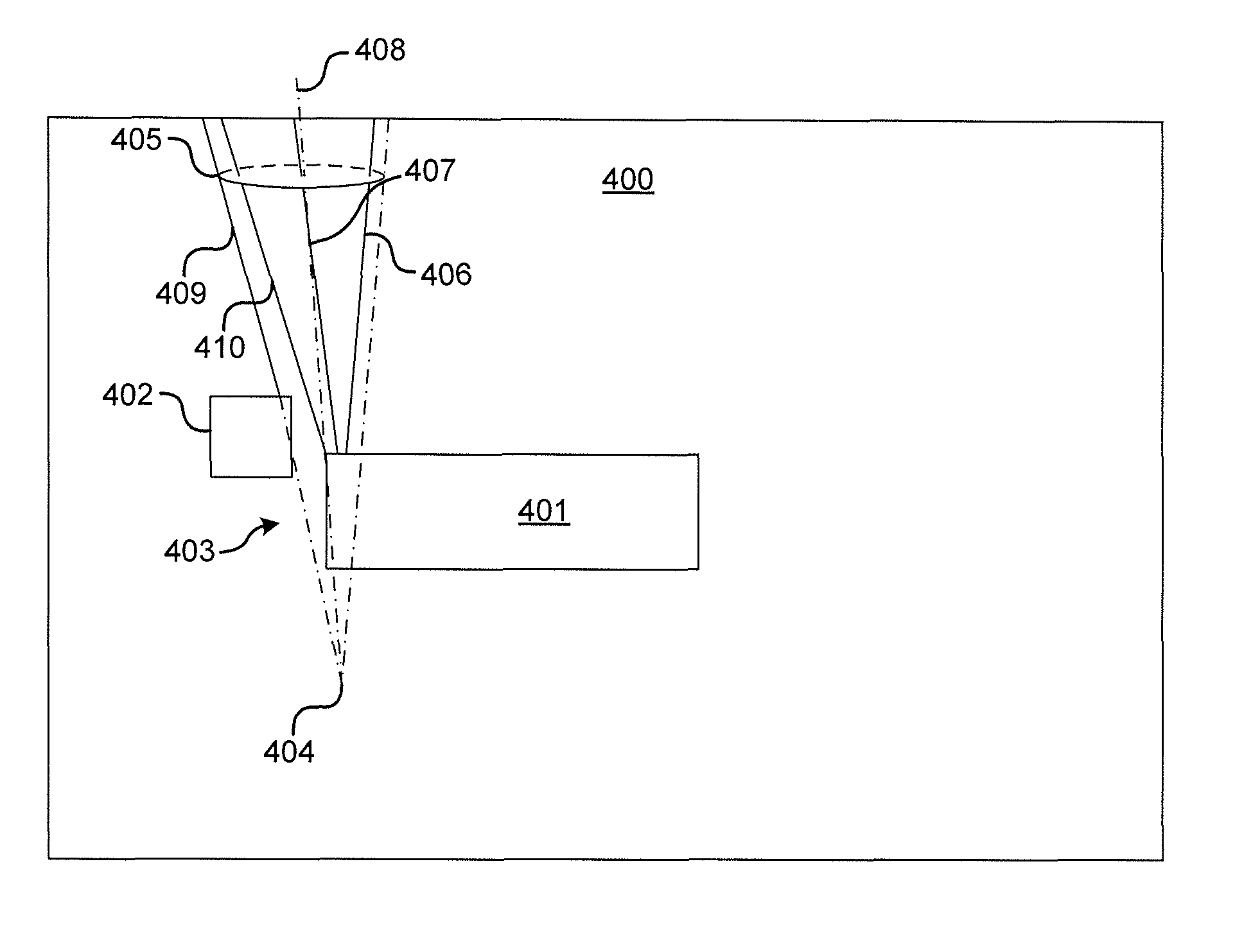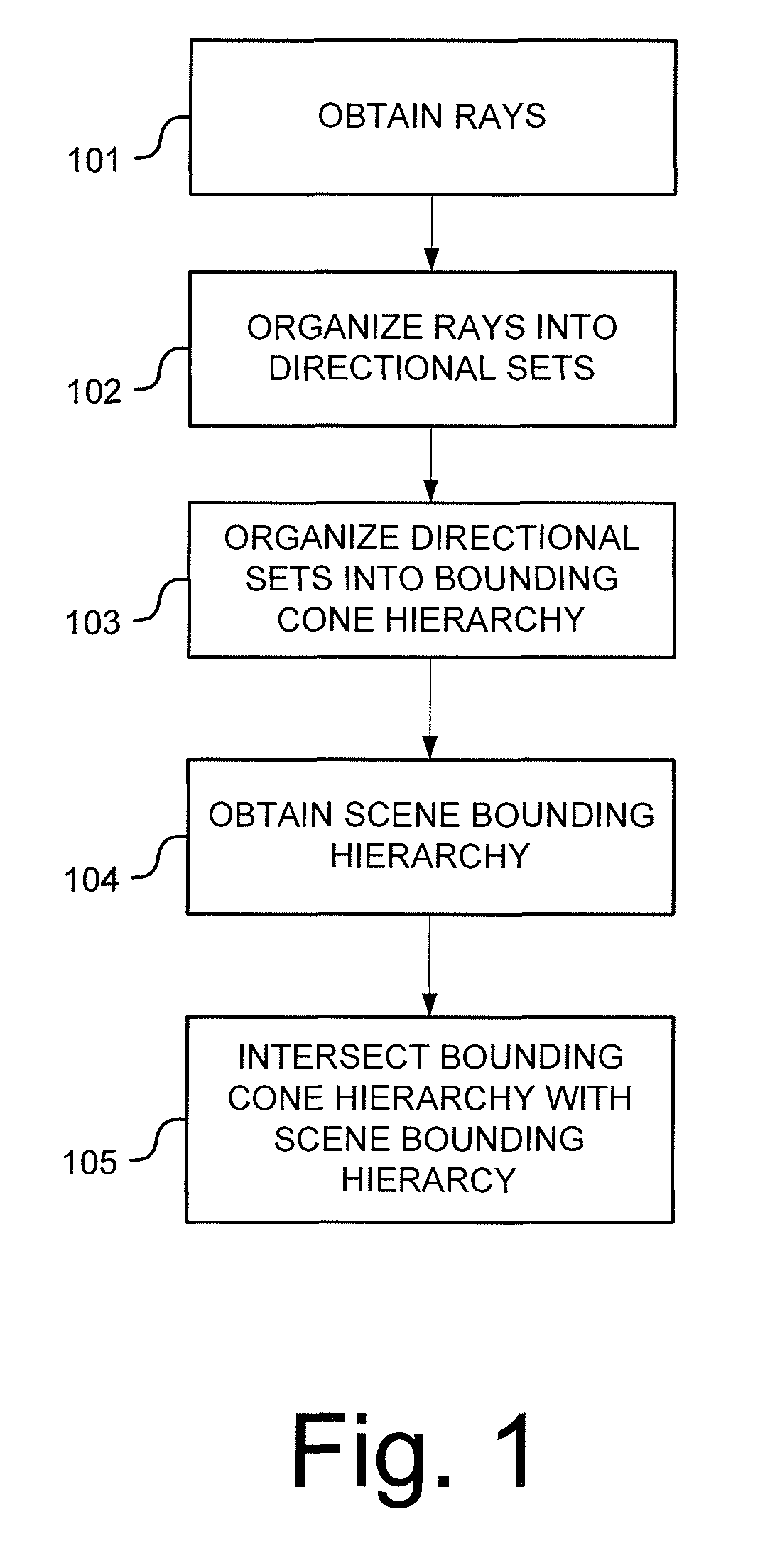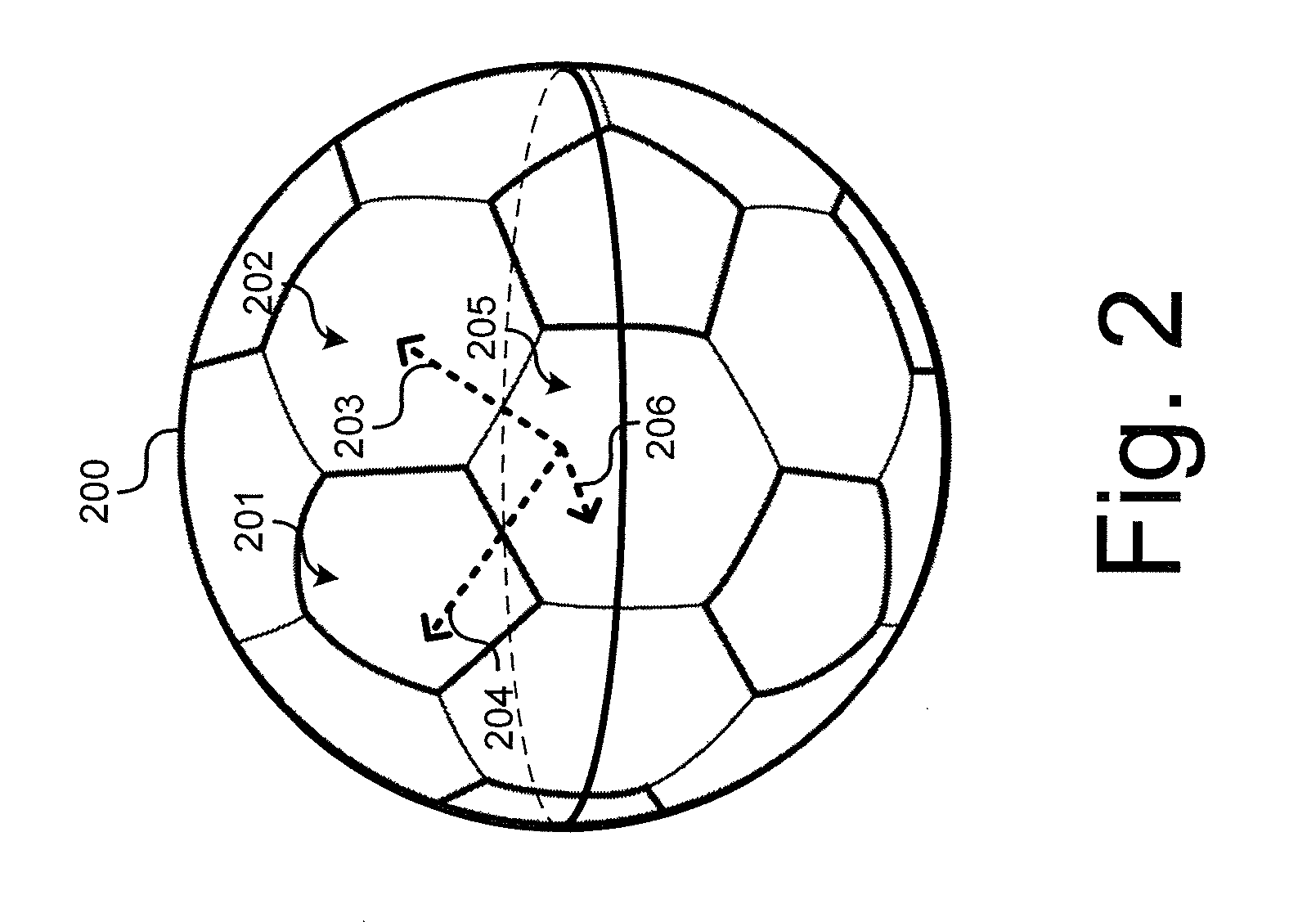Ray cone hierarchy renderer
a hierarchy and renderer technology, applied in the field of computer animation, can solve problems such as greater computational and memory costs
- Summary
- Abstract
- Description
- Claims
- Application Information
AI Technical Summary
Problems solved by technology
Method used
Image
Examples
Embodiment Construction
[0014]Tracing rays or cone, one at a time, is memory and processing intensive. Even with a scene hierarchy, large numbers of rays require high amounts of memory bandwidth to traverse the queries across scene nodes and perform the large number of intersection computations.
[0015]FIG. 1 illustrates an example method for intersecting rays with a scene in a ray tracing scene rendering system. In step 101, rays are obtained for processing. This may include obtaining rays 101 by generating camera rays, generating reflection rays, generating refraction rays, generating shadow rays, generating light rays, or generating any other rays utilized during conventional ray tracing rendering processes. The obtained rays may be a single ray type or a mixture of different ray types. In some cases, the step of obtaining rays 101 includes loading all of the rays that will be used in the method into memory. In other cases, subsets of the entire set of rays may be loaded into memory for iterative processi...
PUM
 Login to View More
Login to View More Abstract
Description
Claims
Application Information
 Login to View More
Login to View More - R&D
- Intellectual Property
- Life Sciences
- Materials
- Tech Scout
- Unparalleled Data Quality
- Higher Quality Content
- 60% Fewer Hallucinations
Browse by: Latest US Patents, China's latest patents, Technical Efficacy Thesaurus, Application Domain, Technology Topic, Popular Technical Reports.
© 2025 PatSnap. All rights reserved.Legal|Privacy policy|Modern Slavery Act Transparency Statement|Sitemap|About US| Contact US: help@patsnap.com



